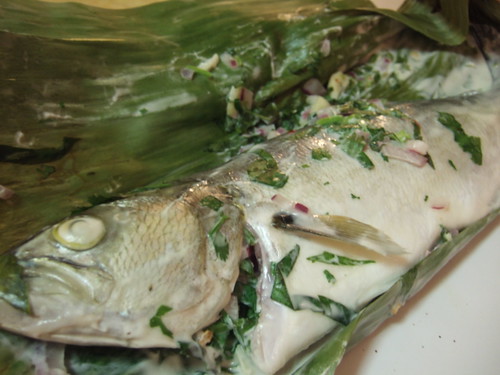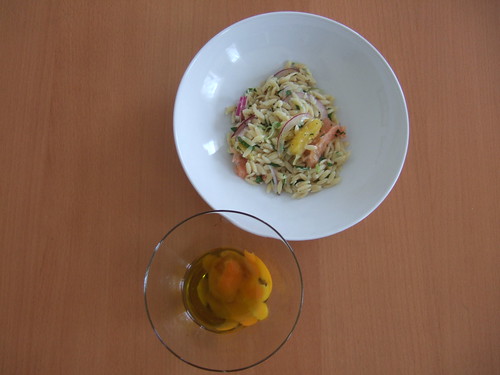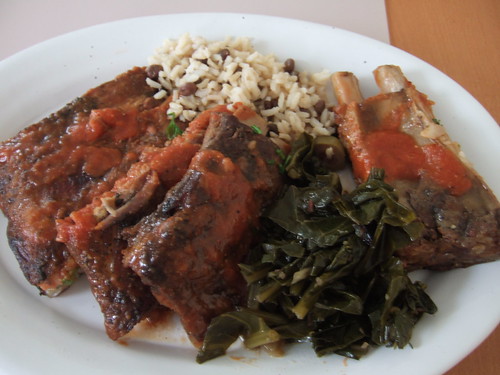This is my second contribution to Lasang Pinoy 20: Binalot, All-Wrapped Up! Binalot comes from balot, which means “to wrap”, while isda is Tagalog for “fish”.
If you live in the Philippines, I’m sure you can go to your neighbor’s backyard and find a banana tree. All you have to do is wipe the leaves down with a wet paper towel to make sure they’re clean. Here in New York City, I bought mine frozen in Chinatown. I thawed the few rectangles I knew I was going to use. If you’re surrounded by concrete buildings and there are no banana leaves around, you can use parchment paper which should be available in your baking goods supermarket aisle. If you can’t find bluefish, you can use cod or even salmon.
Using coconut milk is common in some parts of the Philippines. I grew up calling it gata. The important ingredient here is the dried chiles–the coconut milk needs to have some oomph!
Ingredients:
1 bluefish, scaled and cleaned
half a can of coconut milk
2 cloves of garlic, minced
1 small red onion, finely chopped
a handful of basil leaves, chiffonade
a few sprigs of cilantro, finely chopped
a few sprigs of parsley, finely chopped
dried chiles, crushed
salt, pepper
frozen banana leaves, thawed1. Preheat oven to 375º. Season the fish inside out with salt and pepper.
2. Using a bowl, combine all the ingredients and whisk together to make marinade, except for the fish and banana leaves. Marinate the fish for about 30 minutes.
3. Lay banana leaves large enough to cover the fish on your working table. If they are already in squares, make sure you overlap two leaves for your “base”. Put the fish on top and spoon the coconut mixture inside and outside the fish. Discard the rest. Using another banana leaf square, cover the fish and fold with the base to seal. Use toothpicks to hold the leaves together.
4. Put on a baking sheet and bake for about 12 minutes. Remove from the oven, discard the toothpicks and uncover by removing the top leaf. Return to the oven and cook for another 7 minutes. To serve, leave the fish on the banana leaf; just transfer to a plate.
Related post/s:
Where we got our bluefish
Wrapping fish is fun!
All about Lasang Pinoy
I hosted Lasang Pinoy before: Lamang-Loob, Odd Cuts and Guts





